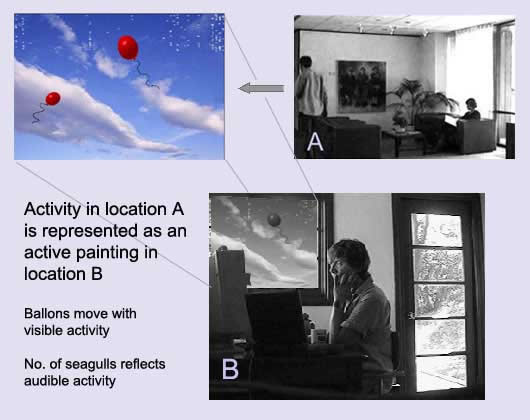AROMA is an attempt to mediate mutual awareness among people who are geographically dispersed but want to be in touch.We wanted to design for subtle awareness, not for any kind of sudden alerts. Thus, the trick was to provide information to the users without disturbing them.
The AROMA prototyping started in 1996, focusing initially on making visual displays for peripheral perception, but as the integrated prototyping and deployment progressed it became clear that the program architecture would support a much wider range of output methods, including real-world sculptures and mobiles and anything that could be sensed by people.
AROMA captures activity in a remote location and creates an abstract representation of this activity in locations that are subscribing to it. The abstract representations serve to save bandwidth, protect privacy for the producer and lower the level of attention required by the consumer. This basic assumptions was also confirmed in field trials: abstract representations seem easier on the perception, less cluttered than a "fuller", more hi-fi image. This is at least true as soon as the abstract "language" has been internalized. Low attention demand will allow the user to utilize a fuller range of her perception for other purposes.

AROMA in the context of other awareness design initiatives |
AROMA provides a general system architecture for linking |
Elin Rønby Pedersen and Tomas Sokoler: AROMA - Abstract representation of mediated presence supporting mutual awareness. ISBN:0-89791-802-9. Pp. 51-58. This reference paper for Aroma was presented at CHI 97 in Atlanta. ACM Portal to Computing Literature, see http://portal.acm.org/citation.cfm?id=258584